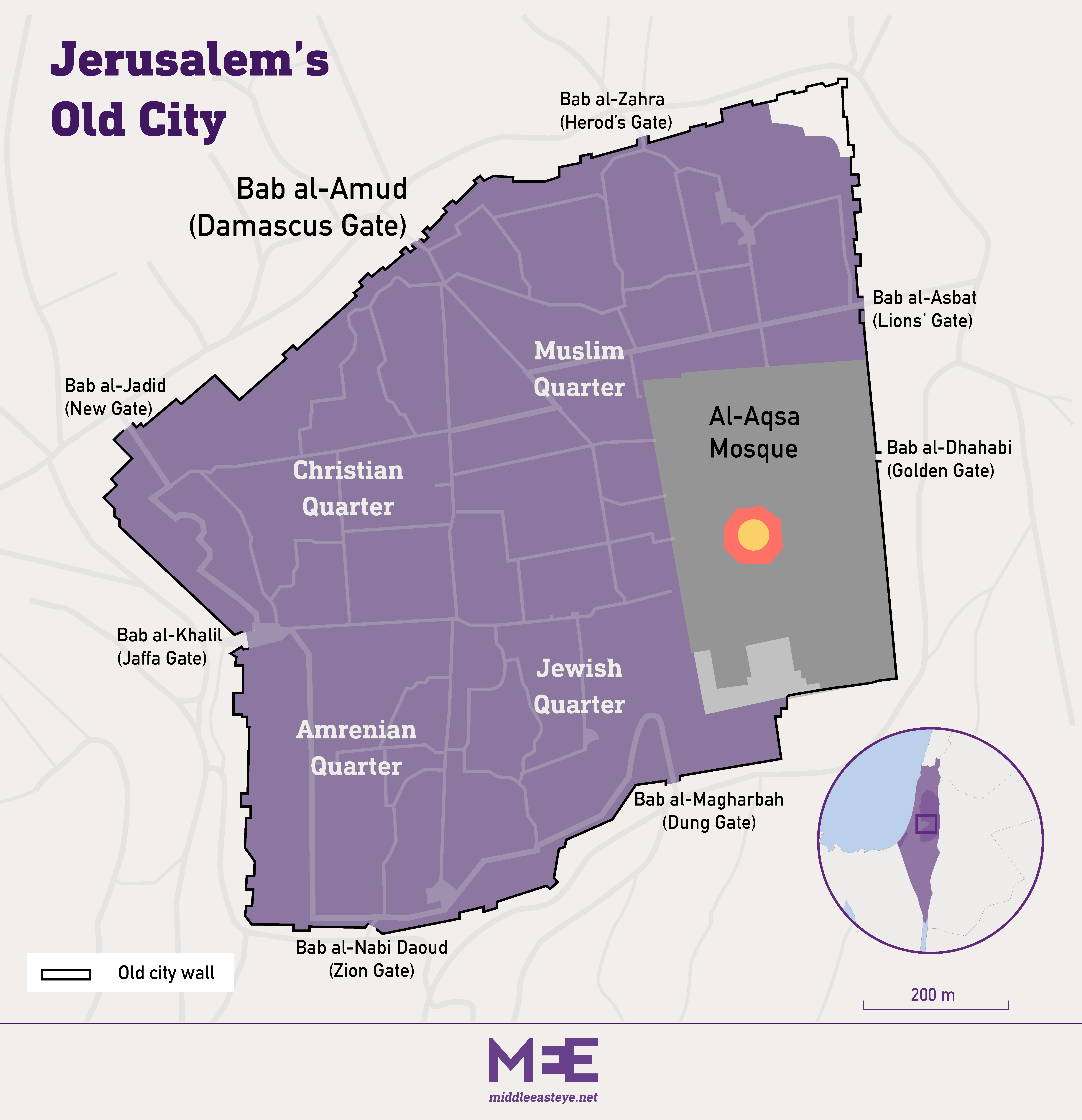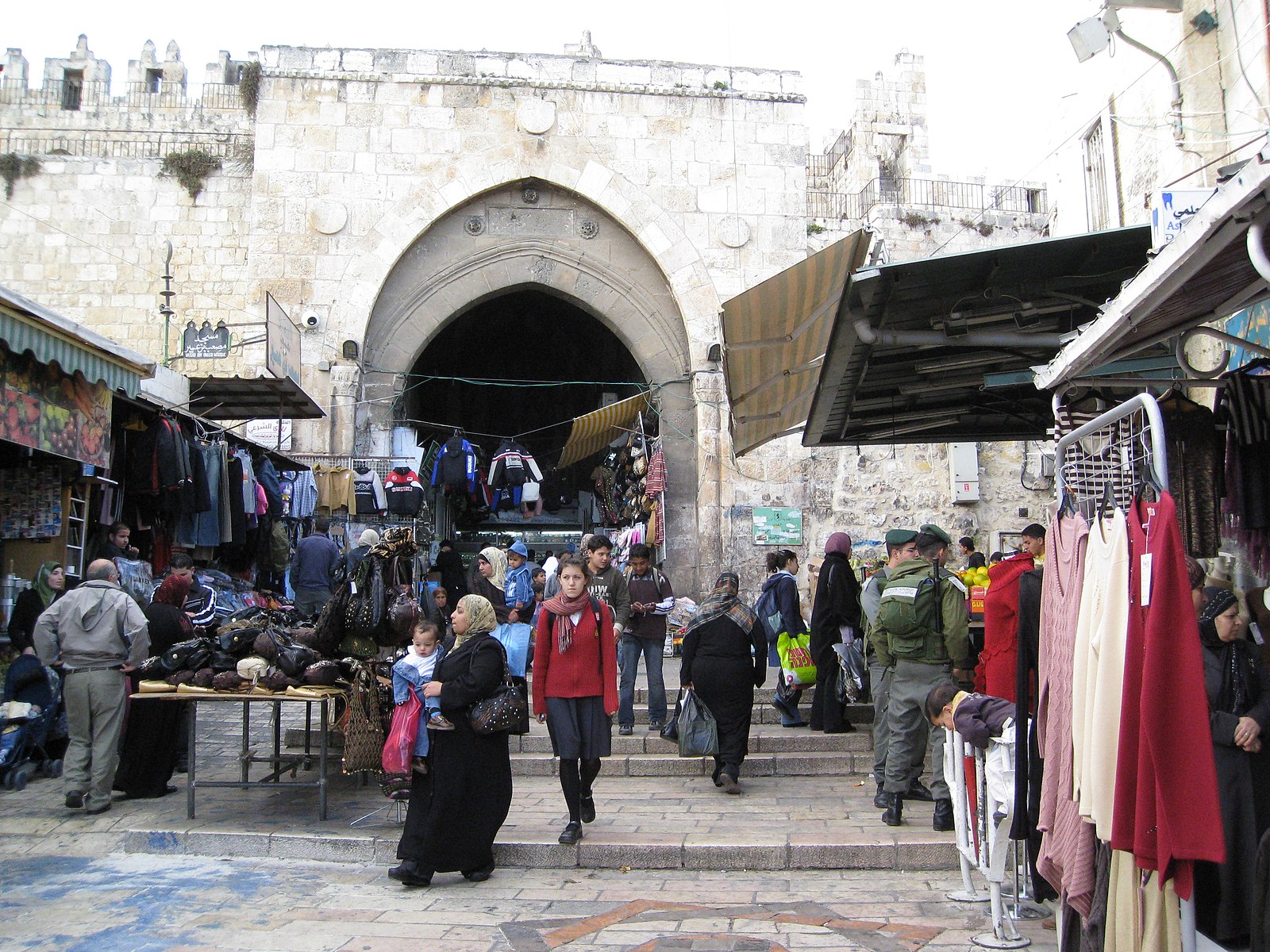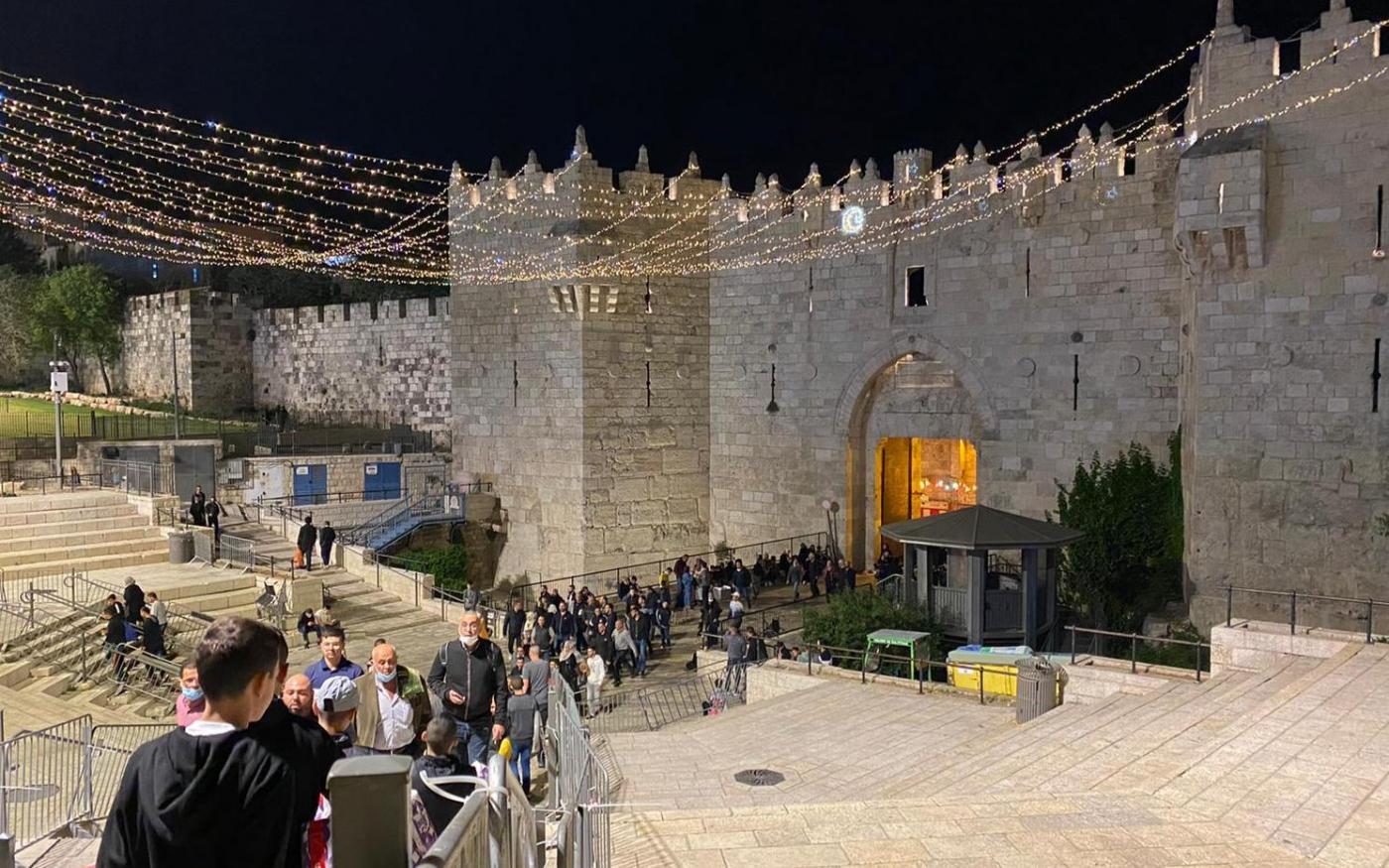Resembling a crown, the towering and turreted walls of the Damascus Gate are a significant landmark in the city of Jerusalem.
Called Bab al-Amoud (“Gate of the Column”) by Palestinians and Sha’ar Sh’khem (“Nablus Gate”) in Hebrew, the structure has symbolic, cultural, and political importance for the people of the city and further afield.
Mostly used by Palestinians to enter the Old City, the area is one of the main focal points of Palestinian life in Jerusalem.
On the narrow streets that spread like capillaries from the gate, Palestinian men sip on coffee on lazy evenings, vendors hawk their goods from carts, and crowds gather to sing traditional songs or protest depending on the political situation at the time.
Brimming with tourists visiting historic Jerusalem and its myriad religious sites, the area is also full of Palestinians and Muslim pilgrims visiting one of their most important national and spiritual symbols; the al-Aqsa mosque.
As many Jewish settler groups claim ownership of the mosque as the promised site of a future temple, surrounding areas, such as the Damascus Gate, have become sites for protest and occasionally violence, as Israeli troops put down protests by Palestinians.
Here Middle East Eye answers some key questions about the landmark:
Where is it located and what do its names symbolise?
The Damascus Gate is located on the northern side of the Old City, towards the middle of the wall that historically surrounded it.
Its location in East Jerusalem, officially makes it a Palestinian site that is occupied militarily by Israel.
Walking through the gate takes you into the heart of the historic city; a maze of souvenir shops, eateries, and cafes.
The gate gets its Arabic name Bab al-Amoud from the pillar – featuring a statue of Emperor Hadrian – that stood at the centre of its courtyard during the Roman-Byzantine era.
The name Damascus Gate refers to its role as the point of exit for those travelling to the Syrian capital before the establishment of Israel.
Crusaders referred to the gate as St Stephen’s Gate due to its location close to the site where they believed St Stephen was martyred.
Uniquely among the gates surrounding the Old City, Bab al-Amoud has had the same name since around the 10th century. Historically, the name Bab al-Nasr (Gate of Victory) has also been used for the structure.
Today, the gate is constantly patrolled by Israeli police, who are sometimes seen on horseback or standing behind metal barriers. Jewish worshippers also use the gate, as it leads to the Western Wall, as well as a nearby light rail station connecting the area to the rest of Jerusalem.
For Jews, the Western Wall is believed to be a remnant of the Second Temple, which was destroyed during the Roman era.
The site is one of the most important for Jewish pilgrims, and each year tens of thousands gather there to recite prayers and place written supplications between gaps in its walls.
When was it built?
Historical records indicate that the gate was originally built by Herod Agrippa I in 41CE and was then rebuilt by Emperor Hadrian during his reign.
The structure was restored once again in 1537 during the reign of the Ottoman Sultan Suleiman the Magnificent.
Translation: “Bab al-Amoud in Jerusalem around 100 years ago”
The Romans had originally built the gate as a connection along the north-south road that passed through Jerusalem.
This original structure had a free-standing triumphal gate with three arches. However, today, only the smaller, eastern arch remains.
What are some key features of the gate?
The gate features triangular crenellations or battlements, which help give the structure the appearance of a crown towards the top.
Unlike some of the other gates that lead into the Old City, the Damascus Gate has stairs descending from top to bottom and its interior includes pointed arches that are carved in the Ottoman style.
Before 1967, the gate had a crenellated turret above it, which was damaged during the Six-Day War.
The Old City of Jerusalem and its walls have been described by Unesco as an important site for the three Abrahamic religions.
Israel continues to build up its militarised security infrastructure around the gate despite its historic significance.
These include a watchtower at the gate, which is equipped with sound detectors that required the uprooting of trees near the structure.
What is the symbolic significance of the gate?
Over the years, the gate has become a cultural icon for Palestinians not only for its role as an entry point into the area surrounding the al-Aqsa mosque but also due to it being a focal point of tensions with the Israeli occupation.
Palestinians see the gate as a place where they can gather and organise against the restrictions placed on Palestinian life in Jerusalem, as well as the Israeli occupation more generally.
The Damascus Gate has become a backdrop to many images and paintings of Jerusalem and features in Palestinian literature and folklore.
Images of the bustling bazaars near the wall and keffiyeh-wearing men walking around it have sentimental value for many Palestinians.
During the Islamic holy month of Ramadan, the gate has a particularly high footfall, as thousands of people come to the area to pray at al-Aqsa and visit family in the city.
Today, most Muslims heading to al-Aqsa mosque from Jerusalem’s eastern neighbourhoods and the West Bank enter through Bab al-Amoud.
What kind of tensions has there been?
Palestinians are regularly subjected to restrictions while trying to enter the Old City and there are also age and gender-based limits placed by Israeli forces on who can enter, particularly during tense political situations.
These restrictions have often led to protests by Palestinians, which have been put down violently by the Israelis, frequently using both rubber-coated bullets and tear gas.
Another source of Palestinian anger is the searches that they are subjected to when going through the gate.
In 2020, Israeli police controversially changed the name of the Damascus Gate steps to the Hadar and Hadas steps after two slain policewomen, Hadar Cohen and Hadas Malka, a move that was seen by many Palestinians as a further attempt to erase Jerusalem’s Palestinian heritage.
“Naming the steps of Damascus Gate with a different name is an attempt to separate the monument of Damascus Gate from its architectural space,” said Yousef Natsheh, an architecture historian at Al-Quds University.
“This is the spirit, this is the space, this is the border of Damascus Gate. How are you going to separate between a soul and a body?”
Post Disclaimer
Disclaimer: Damascus Gate: The significance of the main entry into Jerusalem’s Old City By Nadda Osman - Views expressed by writers in this section are their own and do not necessarily reflect www.globalmuslimscenario.com/ point-of-view
Post Disclaimer |
IMPORTANT : All content hosted on globalmuslimscenario.com is solely for non-commercial purposes and with the permission of original copyright holders. Any other use of the hosted content, such as for financial gain, requires express approval from the copyright owners.



